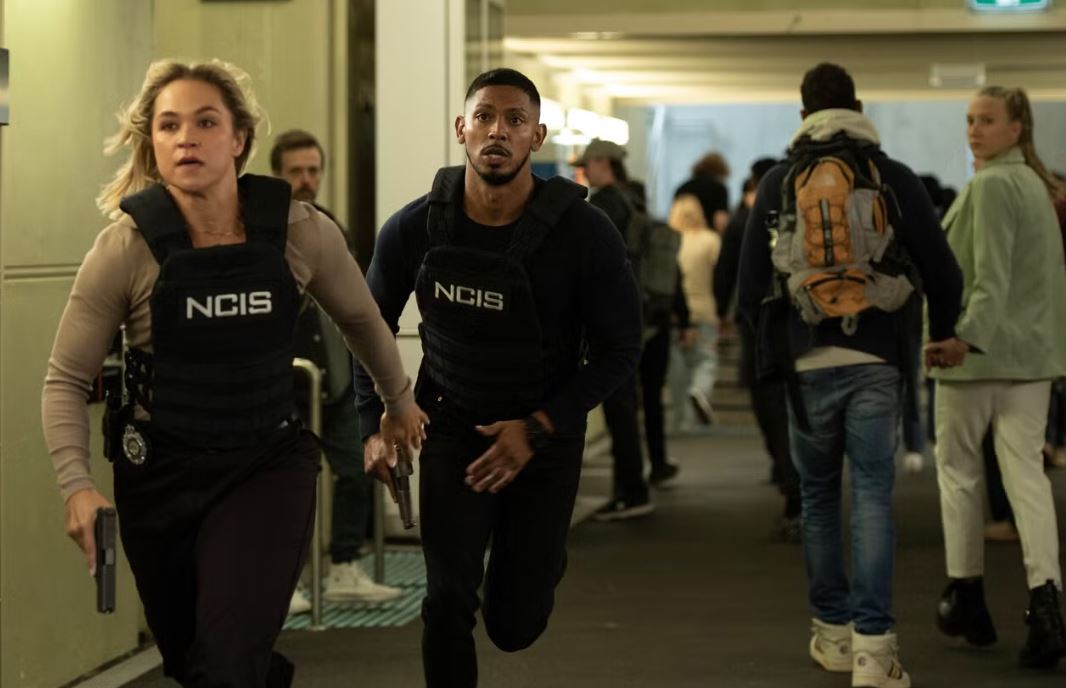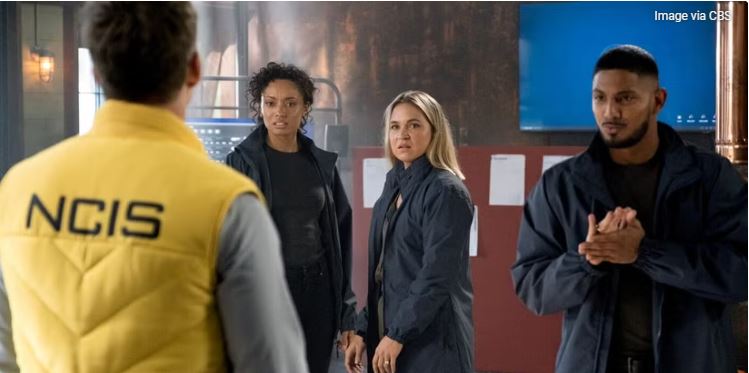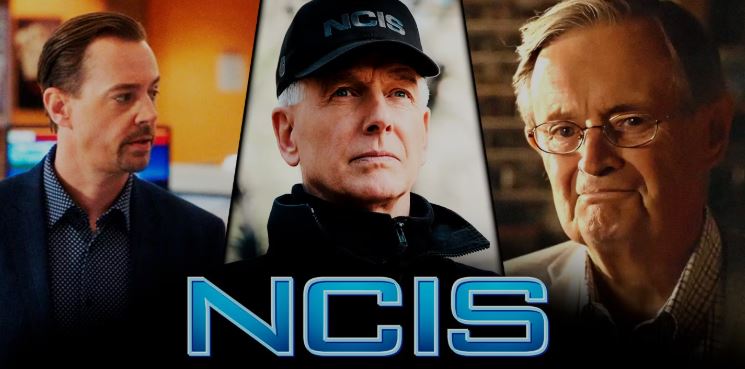NCIS: Sydney Season 2, Episode 3, “Back in the USSR,” ventures into familiar territory. The NCIS franchise as a whole enjoys telling stories that combine Naval drama and espionage, including those connected to the Cold War. One recent example is NCIS Season 22, Episode 5, “In From the Cold.” This episode resembles that one; they’re both spy plots with a heavy dose of sentimentality.
“Back in the USSR” starts when the body of a missing Naval officer is found buried under a concrete slab. As the Sydney team investigates, it becomes apparent that Lieutenant Harvey Wilson was involved in espionage, but they have to figure out to what extent. It’s an episode that’s led by the performance of William McInnes as “Doc” Roy Penrose, with an assist from Todd LaSance committing to one of the most random comedic subplots in show history.
NCIS: Sydney Gets Plenty of Mileage Out of Its 1980s References

Season 2, Episode 3 Gives a Different Meaning to ‘Period Piece’
“Back in the USSR” establishes early that Harvey Wilson went missing in 1985, and thus the opening sequence is jam-packed full of comments about the 1980s. Wilson’s Naval Academy ring has his graduation year listed as 1981. He’s buried with a Sony Walkman — yes, a cassette tape player — beside him. At one point, he’s referred to as a “time capsule.” At least the episode avoids really obvious 80s humor, the same way that Season 2, Episode 2, “Fire in the Hole” steered clear of painful pirate jokes. But it’s very clear what era the story is playing in. And there have been plenty of spy stories in that time period, so NCIS: Sydney then has to establish why this one matters.
The script answers that question by taking its premise one step further and making the details of the era relevant to solving Wilson’s case. The differences in nerve toxin between the 1980s and today becomes relevant. That Walkman plays a critical part in the final scene of the episode. This isn’t just lip service; it adds something to the case of the week. As the story progresses and more details are revealed about what happened in the past, it can take a moment to keep up with the revised timeline. But there’s a sense of place to this episode that’s resolved without using any kind of flashbacks or pop culture name drops. And that helps, because the actual whodunit is a little bit predictable.
NCIS: Sydney Season 2, Episode 3 Successfully Leans on Emotion

The Sad Scenes Smooth Over Some Predictable Plot Points
NCIS: Sydney Season 2, Episode 3 is clearly relying on emotion to keep the audience interested. The plot itself has plenty of twists, but only some of them would be considered surprising. Of course Wilson is originally suspected of being a double agent, before his name is cleared. Of course he’s got a grieving spouse who gets help from the NCIS agents in finding a sense of closure. And of course the old friend of one of the main characters is also considered a bad guy for a litle while. Even the reveal of the ultimate villain — the Russian consul-general Lina Bukovska, a former KGB agent — is fairly obvious, given how the character is written slightly over-the-top. Anybody who is a regular watcher of TV procedurals can suss out at least half the episode.
Foreign Minister Quinn: A Russian-sanctioned murder of a US citizen on Australian soil. Is that what we’re looking at?
That foresight doesn’t stop the audience from connecting to the subplot involving “Doc Roy” Penrose and his longtime friend, OSIA agent Terry. Terry arrives as the person who allegedly investigated Wilson’s disappearance the first time around, but NCIS: Sydney takes that idea and goes from “Terry is a double agent” to “Terry was only working with the KGB to afford medical care for his dying wife.” That would be sad enough, but then the script serves up another dose of heartbreak when he’s exposed to nerve toxin. One of the final beats in the episode is the team finding Terry at his wife’s gravesite, where he confesses all to Doc Roy before dying in his friend’s arms. It’s very clearly designed to get the audience to feel a certain way — and it does, thanks to William McInnes playing Doc Roy so perfectly. (The show also gets points for not having some sad needle drop underscore Terry’s death, the way so many other shows would do.)
There’s also some emotional provocation in Diana’s story, particularly the last scene of the episode. NCIS: Sydney viewers know that Diana is going to finally find out the truth about her husband’s disappearance, but how the show accomplishes it is what makes it so tear-jerking, The tape in the aforementioned Walkman contains a goodbye message that Harvey recorded for Diana once he knew he wasn’t coming home. He apologizes and professes his love, and the audience will have a hard time not getting choked up along with her. The fact that the viewers care so much about the guest characters makes up for the predictability of the plot, because fans want to see the moments they know are coming. They want Diana to get her closure and they want to see Lina lose (or actually give up) her diplomatic immunity. It all comes together perfectly in the end.
NCIS: Sydney Turns JD Dempsey Into Walking Comic Relief

Season 2, Episode 3 Has a Funny Subplot That Surprisingly Works
It’s no secret that NCIS occasionally struggles with comedy, and that weakness has been passed on to NCIS: Sydney. However, “Back in the USSR” scores with a comedic subplot that has no business being as great as it is. The episode opens with the team overjoyed to get their new NCIS jackets — all except for Dempsey, who’s ordered a high-visibility vest. It has all the bells and whistles of a piece of outdoor kit, and there are regular jokes about it for the rest of the hour.
This should get tiring fast. The writers could have simply relied on characters making fun of Dempsey for the entire episode. The other team members certainly get their shots in. But it’s still funny for two reasons: actor Todd Lasance commits entirely to the bit, playing up Dempsey’s ego as he thinks he’s had the bes idea ever. JD has a while to go before he makes the list of quirky TV detectives, but he’s getting there. Plus, the jacket actually comes in handy after JD and Mackey are exposed to nerve agent; it’s the one piece of clothing the Hazmat guy doesn’t seize, praising how resistant it is. So it’s always funny, but also a little bit relevant, and the script isn’t hitting the same beat over and over again.
NCIS: Sydney Season 2, Episode 3 is definitely familiar, but it relies on the emotional performances and the feelings it tugs out of the audience to make it successful. And because that play on the heartstrings works, the episode works. It’s not novel, but the characters get where viewers want them to go, and fans can walk away feeling satisfied.
